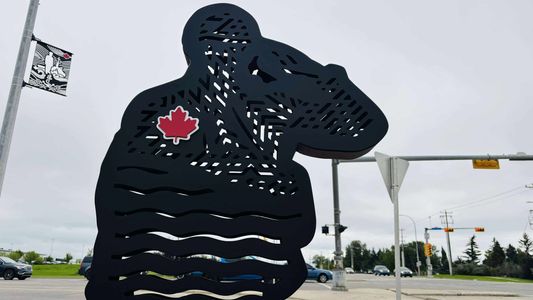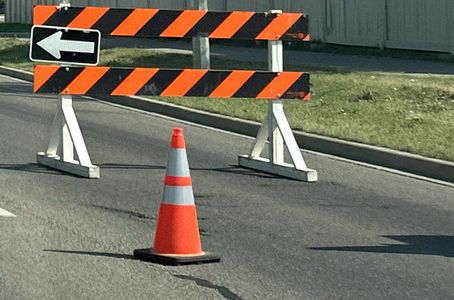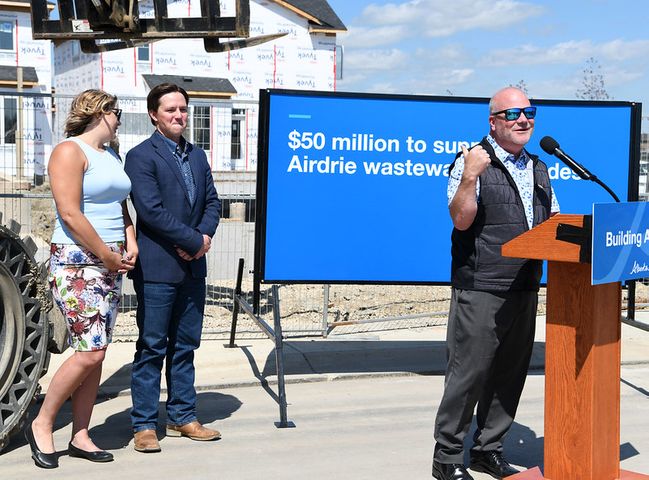Local News
Inside ‘the single largest investment from the province’ to Airdrie
Design work has begun on the largest provincial funding commitment in Airdrie’s history — a $114-million wastewater expansion that includes a new seven-kilometre pipeline to Calgary’s treatment system — with Alberta contributing $50 million and the city saying no property tax or utility rate increases are expected. The City repeated that assurance in its Aug. 8 written response, confirming rates and property taxes are not expected to change as a result of its share of the project cost. At the July 30 announcement, Transportation and Economic Corridors Minister Devin Dreeshen said, “The province of Alberta is providing $50 million to Airdrie to upgrade its wastewater system to meet current and future critical infrastructure needs.” He added local MLA Angela Pitt “has been advocating and twisting my arm for many, many years” for the project. In the Government of Alberta’s written release the same day, Pitt said: “Our government’s investment in upgraded wastewater infrastructure is great news for a growing community like Airdrie. With new residential and commercial developments popping up every day in this area, the need for reliable wastewater treatment services has never been greater. By bringing new wastewater pipeline infrastructure online, we are ensuring families and businesses have the services they need to thrive.” Dreeshen described Airdrie as “approaching a population of nearly 90,000” and said the city’s growth rate over the past three years was about 25 per cent. The province’s written release used similar figures — more than 25 per cent growth “since 2022” and a population “now over 90,000”. He said the $114-million project “will support new serviced subdivisions, allowing for the addition of up to 45,000 new housing units, along with commercial and industrial growth.” The City of Airdrie later echoed the same housing unit total in its Aug. 8 statement, adding more detail on housing types and the land area to be developed. Mayor Peter Brown told the event crowd, “We started advocating for this about two years ago,” adding the provincial commitment came after sustained lobbying by the City and province. He also said, “The projected economic return over the lifetime of this pipe is $45 billion… that’s across the province.” A subsequent City-commissioned study by Nichols Applied Management gave a more precise figure of $45.9 billion. In the province’s written release, Brown said: “We are deeply grateful to the Province of Alberta for recognizing the significant infrastructure pressures facing the City of Airdrie. This announcement represents the largest provincial funding commitment in our city’s history and comes at a pivotal time for our growing community. We extend our sincere thanks to the Provincial Government, our partners in private industry and the dedicated team at the City of Airdrie, along with everyone who contributed to making this achievement possible.” In its Aug. 8 written response to questions from Discover Airdrie, the City of Airdrie said it is managing both the design and construction stages of the project, with design completion slated for mid-2026. The pipeline will follow the existing Utility Right of Way adjacent to the CPKC right of way. The City will own and maintain the portion from Airdrie — including any section through Rocky View County — to the municipal boundary of Calgary. Calgary will own the portion within its municipal boundary. The $64 million not covered by the province will be initially funded by municipal debt, repaid over time through developer levies. The City has applied to the Canada Housing Infrastructure Fund for additional funding under the direct delivery stream and said no updates have yet been received on the application’s status. As Airdrie approaches the wastewater capacity limit of its pre-annexation area, the City said Nichols Applied Management helped determine the economic benefits of the new line for use in funding requests and long-term planning. The study estimated a $45.9-billion economic return — or $550 million annually — over a 70- to 90-year period, bringing the city to full buildout of its current municipal boundaries. Brown’s earlier rounded $45-billion estimate, given at the announcement, referred to the same long-term economic modelling. According to the statement, development of the annexed lands could support more than 53,000 direct jobs, including 21,000 commercial and 32,000 industrial, with another 4,570 construction jobs each year. The project would also enable the development of up to 45,000 new housing units across 10,721 gross developable acres. The province’s release cited a similar developable area total, rounded to 10,000 acres. Housing types would include single-family homes, townhomes, duplexes, multiplexes and multi-family apartment buildings, providing a range of “missing middle” options for families, young adults, seniors and other underserved demographics. The City’s response said no changes to water or wastewater rates, or to property taxes, are expected as a result of its share of project costs. It also said the pipeline’s projected lifespan is more than 75 years. The province framed this in broader terms, saying the partnership with Calgary reduces long-term infrastructure costs. Airdrie has a Master Servicing Agreement with Calgary that extends to 2035 and takes projected growth into account. The City has received water and sewer services from Calgary since the late 1970s and expects this to continue. Any service disruptions in Calgary’s system, such as sustained drought or major line breakages, would require Airdrie to adjust its service delivery. The statement added that alternate sanitary sewer treatment options have been reviewed in the past. It said standalone facilities require large land setbacks, are uneconomic due to capital and operating costs, and are not supported by Alberta Environment and Parks, which favours regional sewage treatment options. In its own Aug. 8 written response, the City of Calgary said City Council “makes the decision on who and where Calgary provides water.” “The City of Airdrie is an existing regional customer with The City of Calgary with a Master Servicing Agreement in place,” the statement said. On whether that agreement has been amended for the new pipeline, Calgary said the two cities “have maintained a regional servicing partnership since the 1970s.” The current 20-year Master Servicing Agreement, signed in 2015, “is updated every four years to reflect new forecasts, capacity needs and infrastructure.” The next update is expected in 2026. Calgary reiterated this four-year update cycle later in its statement when discussing capacity planning for 2027–2030, using similar wording. “Every four years, we work with our regional customers to confirm the capacity needs for the upcoming four years, which aligns with The City’s budget and business planning cycles,” Calgary said. “In 2026, we will confirm the 2027-2030 capacities required for regional customers.” The statement added: “The City also works with our regional customers regularly to plan infrastructure. Calgary and Airdrie have been collaborating closely on the new sanitary connection needed by Airdrie and the relocation of an existing meter chamber within Calgary city boundaries to enable more development within Calgary.” On whether the agreement includes limits or cost-sharing provisions, Calgary said the Master Servicing Agreement “specifies maximum volume and flow rates for a four-year window” and “speaks to the need for joint infrastructure planning to occur regularly.” “Regional rates are set through a consultative review with regional customers in alignment with The City’s business cycle to ensure regional customers cover 100 per cent of the cost of service they receive and are aligned to the typical rate-making guidelines of the Alberta Utilities Commission,” the statement said. “The City recoups the full cost of operational and capital expenditures to provide water and wastewater service to its regional customers.” Calgary also described how it applies these rates, noting regional customers are charged a fixed monthly fee and a variable fee based on water used and wastewater treated in cubic metres. “Since 2024, The City of Calgary worked collaboratively with The City of Airdrie on the planning of this proposed sanitary pipeline,” the statement said. “While the tie-in point and details related to the alignment of the proposed sanitary pipe are still subject to change and refinement as the design work progresses, we will continue to partner with The City of Airdrie on the design work through 2026.” In its July 30 written release, the province cited Airdrie’s population growth of more than 25 per cent since 2022, with the population “now over 90,000.” The release said the project “ensures that Airdrie can continue to grow sustainably while leveraging existing regional infrastructure assets, rather than building a new treatment facility. By partnering with Calgary to manage wastewater treatment, Airdrie is reducing long-term infrastructure costs.” It also noted that recently annexed land in east Airdrie offers 10,000 acres of developable land, accessible through the recently completed 40 Avenue/Highway 2 interchange. Rocky View County was asked to confirm whether the planned pipeline route passes through County lands, whether it has reviewed or approved the routing, and whether it has entered into any agreements, easements or participated in intermunicipal planning discussions. The County was also asked if it would be responsible for permits or approvals within its boundaries. No response was received in time for publication. The Government of Alberta was also asked to confirm the date and decision process for approving the $50-million funding, whether the application was part of a broader capital intake, ownership and oversight details for the pipeline, capacity guarantees under the Calgary agreement, and whether a standalone treatment facility was considered. No response was received in time for publication. In an Aug. 8 written statement, Housing, Infrastructure and Communities Canada said it “is continuing to work with provincial, territorial and municipal partners to support infrastructure projects of local and regional significance, including water and wastewater projects that are key to communities’ expansion and well-being.” It said specific funding commitments are announced “in collaboration with partners and project owners” and that to maintain “partner confidentiality and the integrity of funding application processes,” the department “does not provide details on specific funding applications that have not been announced.” Sign up to get the latest local news headlines delivered directly to your inbox every afternoon. Send your news tips, story ideas, pictures, and videos to news@discoverairdrie.com. You can also message and follow us on Twitter: @AIR1061FM. DiscoverAirdrie encourages you to get your news directly from your trusted source by bookmarking this page and downloading the DiscoverAirdrie app.






